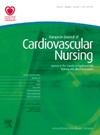双相情感障碍患者的心脏病和中风发病率
IF 3.9
3区 医学
Q2 CARDIAC & CARDIOVASCULAR SYSTEMS
引用次数: 0
摘要
背景 据观察,双相情感障碍(BP)等精神障碍患者更容易患心血管疾病(CVD)和中风。然而,关于严重精神障碍与心血管疾病和中风事件之间的关系,目前仍无定论。目的 通过基于大量回顾性数据的队列研究,我们旨在确定入院诊断为双相情感障碍的患者发生心血管疾病和中风的相对风险。方法 该研究使用 TriNetX 全球协作网络中全球 113 家医疗机构提供的电子健康记录,其中至少包含 690,946 名有血压症状的患者。评估的重点是确诊血压后患者中缺血性心脏病、非外伤性脑出血或脑梗塞的首次发病率。在对年龄、性别、种族和合并症进行倾向性评分匹配后,将这些发病率与无精神、行为或神经发育障碍且同样发生类似心血管疾病和中风事件的患者队列进行比较。此外,还进行了卡普兰-梅耶分析(Kaplan-Meier Analysis),以比较他们在心血管疾病中的存活率,同时考虑到患者的剔除情况。结果 应用评分匹配后,每个队列的患者人数为 532,082 人。与无任何精神障碍的人相比,血压高的人患缺血性心脏病、非外伤性脑出血或脑梗塞的几率比(OR)为 2.349,表明发生此类事件的风险显著升高。卡普兰-梅耶尔分析显示,与没有任何精神障碍的患者相比,确诊有血压问题的患者在确诊后20年后出现心血管疾病问题的生存概率要低9.88%。前者(确诊为血压患者)发生心血管疾病的风险比无精神障碍患者高出近一倍,危险比为 1.970(95%CI 1.935-2.005)。结论 与无精神障碍的双相情感障碍患者相比,双相情感障碍患者出现心血管问题和中风的风险更高。通过倾向得分匹配程序限制了潜在的混杂因素,如人口统计学、合并症和药物治疗等,确保了研究结果的稳健性。这项研究表明,心脑血管疾病的监测和预防方法必须与精神障碍症状相适应。本文章由计算机程序翻译,如有差异,请以英文原文为准。
Incidence of heart disease and stroke among patients with bipolar disorder
Background Increased vulnerability to cardiovascular diseases (CVD) and stroke has been observed among people with mental disorders, such as bipolar disorder (BP). Yet, the evidence for the association between severe mental disorders and CVD and stroke events remains inconclusive. Purpose By running a cohort study based on large retrospective data, we aimed to establish the relative risk of CVD problems and stroke in patients admitted to the hospital and diagnosed with BP. Methods The study was conducted on electronic health records provided by 113 healthcare organizations worldwide from the TriNetX Global Collaborative Network, containing at least 690,946 patients with BP symptoms. The assessment was focused on the first incidence of ischemic heart diseases, nontraumatic brain hemorrhage, or cerebral infarction among patients after BP diagnosis. After propensity score matching age, gender, race and comorbidities, the rates were compared against a cohort of patients with no mental, behavioral, or neurodevelopmental disorders who also suffered from similar CVD and stroke events. In addition, Kaplan-Meier Analysis was performed to compare their survivability to CVD, taking into account patient censoring. Results Patient count after applying the score matching yielded 532,082 per cohort. The odds ratio (OR) of ischemic heart diseases, nontraumatic brain hemorrhage, or cerebral infarction on BP compared to people without any mental disorder was equal to 2.349, indicating a significantly elevated risk for such events. The Kaplan-Meier analysis showed that patients with BP diagnosis had 9.88% less survival probability to having CVD problems after 20 years since the diagnosis than patients without any mental disorder. With a hazard ratio of 1.970 (95%CI 1.935-2.005), the risk of developing a CVD problem on the former (patients with BP diagnosis) was almost twice greater than for patients suffering without mental health disorders. Conclusion There is an increased risk of developing cardiovascular problems and stroke among patients with bipolar disorder compared to patients affected by such symptoms without mental disorders. The robust results were ensured by limiting the potential confounders with the propensity score matching procedure, such as demographics, comorbidity, and medication. The study implies that monitoring and prevention approaches for cardiovascular and cerebral vascular diseases must be tailored to symptoms of mental disorders.
求助全文
通过发布文献求助,成功后即可免费获取论文全文。
去求助
来源期刊

European Journal of Cardiovascular Nursing
CARDIAC & CARDIOVASCULAR SYSTEMS-NURSING
CiteScore
5.10
自引率
10.30%
发文量
247
审稿时长
6-12 weeks
期刊介绍:
The peer-reviewed journal of the European Society of Cardiology’s Council on Cardiovascular Nursing and Allied Professions (CCNAP) covering the broad field of cardiovascular nursing including chronic and acute care, cardiac rehabilitation, primary and secondary prevention, heart failure, acute coronary syndromes, interventional cardiology, cardiac care, and vascular nursing.
 求助内容:
求助内容: 应助结果提醒方式:
应助结果提醒方式:


